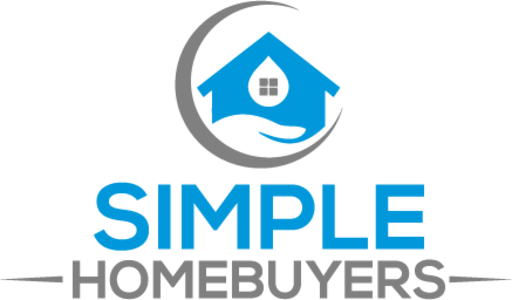5 Real Estate Buzzwords Every Maryland Real Estate Investor Should Know
As a real estate investor, staying current with industry trends and understanding key terminology is more than helpful—it’s essential. In Maryland, where market dynamics can shift quickly, knowing the language of real estate investment gives you the insight and confidence to make smarter, more profitable decisions. The real estate business is not static. It requires hands-on attention, continual learning, and strategic adaptability to protect and grow your assets. Let’s break down five essential buzzwords that every serious Maryland investor should have in their vocabulary.
Cash Flow
At its core, investing in real estate is about generating income, and that makes cash flow the king of investment metrics. Positive cash flow refers to the money left over after all property-related expenses have been paid—mortgage, maintenance, taxes, insurance, and management. A positive return on your investment allows you to reinvest, cover vacancies, and weather market fluctuations with confidence.
If you’re just getting started or looking to sharpen your portfolio strategy, cash flow is a foundational concept that should guide your acquisitions. For a deeper dive into how investors successfully leverage cash-generating opportunities, read our blog on 5 Things to Look for When Buying Land in Fort Washington.
Cap Rate
Short for “capitalization rate,” this term is used to compare the profitability of various real estate investments. The cap rate is calculated by dividing the property’s net operating income (NOI) by its purchase price. A higher cap rate typically suggests a higher return—but it also may indicate more risk.
Understanding cap rate allows you to evaluate multiple investment properties on an apples-to-apples basis, even if they have very different asking prices or rental histories. At Simple Homebuyers, our team helps investors run accurate numbers and navigate market data to find the best deals. You can learn more about this in our blog 5 Ways Buying Investment Property in Bowie Is Different From Buying a Home to Live in Yourself.
Value-Add
The “value-add” strategy refers to buying properties that need improvements—whether cosmetic updates, structural fixes, or better tenant management—to increase their value and revenue potential. It’s an ideal tactic for investors looking to boost equity quickly or reposition a property within its market.
Real estate investors who master this approach can often achieve above-market returns, especially when operating in undervalued or transitional neighborhoods. But execution is key. Misjudging repair costs or market demand can derail the best-laid plans. For insights on maximizing property value in today’s market, see 5 Reasons to Use a Wholesaler to Sell Your House in Fort Washington, where we highlight how strategic partnerships and expert insight can drive smarter decisions.
Turnkey
Turnkey properties are move-in ready and require no immediate repairs or renovations. These investments appeal to buyers who prefer passive income and want to avoid the headaches of rehabs, permitting delays, or contractor issues. Turnkey investments are particularly attractive for out-of-state investors and retirees seeking stable monthly income.
While turnkey homes often carry a higher purchase price, they can generate consistent rental income and reduce vacancy rates. Partnering with an experienced buyer or property management team can ensure your turnkey investment performs as expected. Reliable local property management, for example, plays a major role in making sure tenant relations and maintenance run smoothly.
Market Cycle
Finally, understanding the real estate market cycle is vital to timing your purchases and exits. The market moves through predictable phases: recovery, expansion, hyper-supply, and recession. Knowing where your local Maryland market stands helps you make smarter buying and selling decisions, avoid overpaying during a peak, and recognize good deals during downturns.
Investors who monitor housing supply, interest rates, and buyer demand are better positioned to capitalize on cyclical trends. For a broader understanding of market timing and real estate strategy, we recommend checking out federal data from the U.S. Department of Housing and Urban Development (HUD) and industry insights at NAREIT.
Exit Strategy
Your exit strategy is just as critical as your entry. Whether your plan is to flip the property, hold it long-term for cash flow, or use a 1031 exchange to roll gains into a new investment, having a clearly defined exit strategy ensures you’re prepared for both expected and unexpected market changes.
Failing to plan your exit can result in poor timing, tax surprises, and missed opportunities. That’s why experienced investors always evaluate potential outcomes at the beginning of a deal, not the end.
NOI (Net Operating Income)
Understanding Net Operating Income (NOI) is key to evaluating the profitability of a property. NOI is calculated by subtracting all operating expenses from the gross income the property generates. It excludes mortgage payments, capital expenditures, and taxes, offering a cleaner look at the asset’s performance.
A healthy NOI can increase property value, attract better financing terms, and serve as a solid indicator of long-term investment viability. It’s also crucial when calculating cap rates and evaluating risk vs. reward.
BRRRR Strategy
BRRRR stands for Buy, Rehab, Rent, Refinance, Repeat. This popular strategy allows investors to build wealth by recycling capital through a series of value-add properties. The BRRRR method starts with purchasing a distressed or undervalued property, renovating it to increase its value, renting it out to stabilize income, refinancing to pull out equity, and repeating the process.
While the BRRRR strategy requires upfront capital and a solid team of contractors and lenders, it can be an incredibly efficient way to scale your real estate portfolio without tying up your cash in each property. However, market timing and renovation costs can make or break your BRRRR execution.
Final Thoughts: Speak the Language, Win the Game
These five buzzwords are more than just industry jargon. They’re the framework for assessing deals, minimizing risk, and building wealth in real estate. As you expand your knowledge and portfolio in Maryland, staying fluent in these concepts will give you a competitive edge in a crowded market.
And remember—you don’t have to do it all alone. Whether you’re brand-new to investing or you’ve closed dozens of deals, the professional buyers at Simple Homebuyers are here to help you make smarter, faster, and more profitable moves.
Reach out to Simple Homebuyers today and let’s talk about your goals. We’ll guide you through every step of the process—from identifying the right opportunities to closing the deal with confidence.

